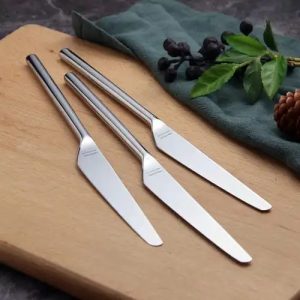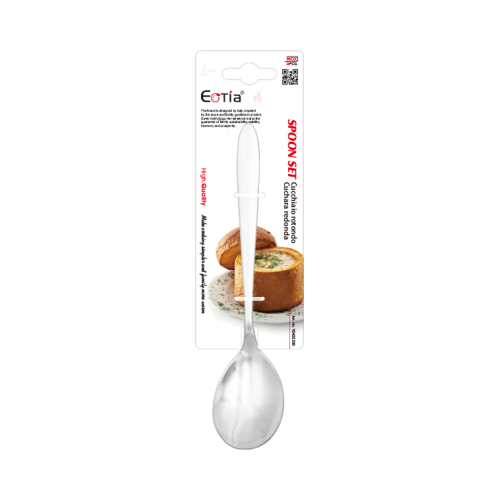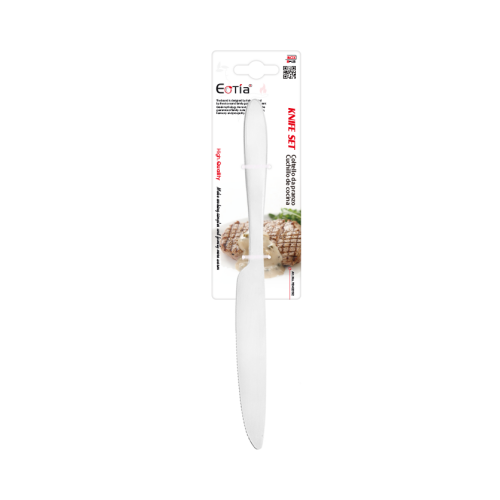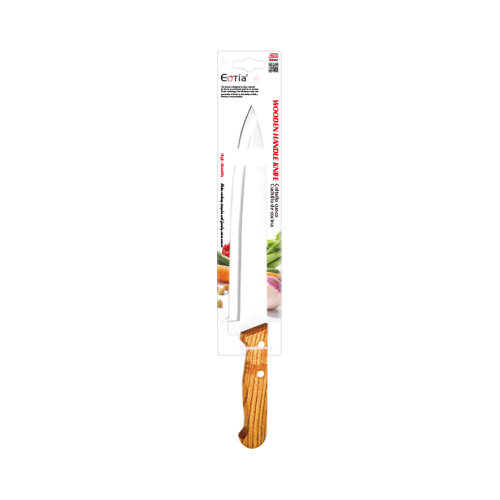When shopping for stainless steel kitchen utensils like spoons and spatulas, it’s important to know how to distinguish high-quality products from inferior ones. Poor-quality stainless steel may rust, bend easily, or even leach harmful metals into food. Here’s a guide to help you evaluate the quality of stainless steel utensils before purchasing.

1. Check the Grade of Stainless Steel
High-quality stainless steel is typically made from 18/10 (304-grade)or 18/8 (304-grade), which contain 18% chromium and 8-10% nickel. These grades are corrosion-resistant and durable. Avoid low-grade stainless steel like 200-series, which contains less nickel and more manganese, making it prone to rust and less durable.
How to identify:
– Look for markings like “18/10,” “304,” or “316” (surgical-grade, even better).
– If no markings are present, check for rust spots or a dull finish—signs of low-quality steel.
2. Assess the Weight and Thickness
A well-made stainless steel spoon or spatula should feel **solid and sturdy**, not flimsy. Thin, lightweight utensils are more likely to bend or warp under heat and pressure.
Test:
– Press gently on the handle—if it bends easily, it’s likely made from thin, low-quality steel.
– High-quality utensils often have a thicker base and a balanced weight.
3. Examine the Finish and Polish
Premium stainless steel has a smooth, mirror-like finish without scratches, pits, or rough edges. A poor-quality product may have visible seams, uneven polishing, or sharp edges.
What to look for:
– Run your finger along the edges—they should be smooth, not sharp.
– Check for consistent polishing; a cloudy or streaky surface indicates poor craftsmanship.
4.Test Magnetism (For Authenticity Check)
High-quality **austenitic stainless steel (304 or 316) is generally **non-magnetic** or only slightly magnetic. If a spoon or spatula is strongly magnetic, it may contain more iron (a sign of lower-grade steel).
Note: Some high-quality stainless steel may still have slight magnetism due to work hardening, but excessive attraction to a magnet suggests inferior material.
5. Look for Proper Welding and Construction
If the utensil has a riveted or welded handle, inspect the joints:
– Rivets should be smooth and secure, not loose.
– Welds should be clean and seamless, with no gaps where bacteria can accumulate.
Avoid utensils with glued handles, as they may weaken over time with heat exposure.
6. Check for Heat and Corrosion Resistance
High-quality stainless steel should resist discoloration and warping even when exposed to high heat.
Simple test:
– Boil the utensil in water for a few minutes—if it develops rainbow-like discoloration (a sign of oxidation), it may not be high-grade steel.
– Leave it in salty or acidic food (like tomato sauce) for a few hours—rust or pitting indicates poor corrosion resistance.
7. Consider the Brand and Price
While price isn’t always an indicator of quality, extremely cheap stainless steel utensils are often made with inferior materials. Reputable brands usually provide **material certifications(e.g., “FDA-approved” or “food-grade 304”).
A good stainless steel spoon or spatula should be rust-resistant, sturdy, well-polished, and made from high-grade steel (preferably 304 or 316). By checking these factors, you can ensure your kitchen tools are safe, durable, and long-lasting.



